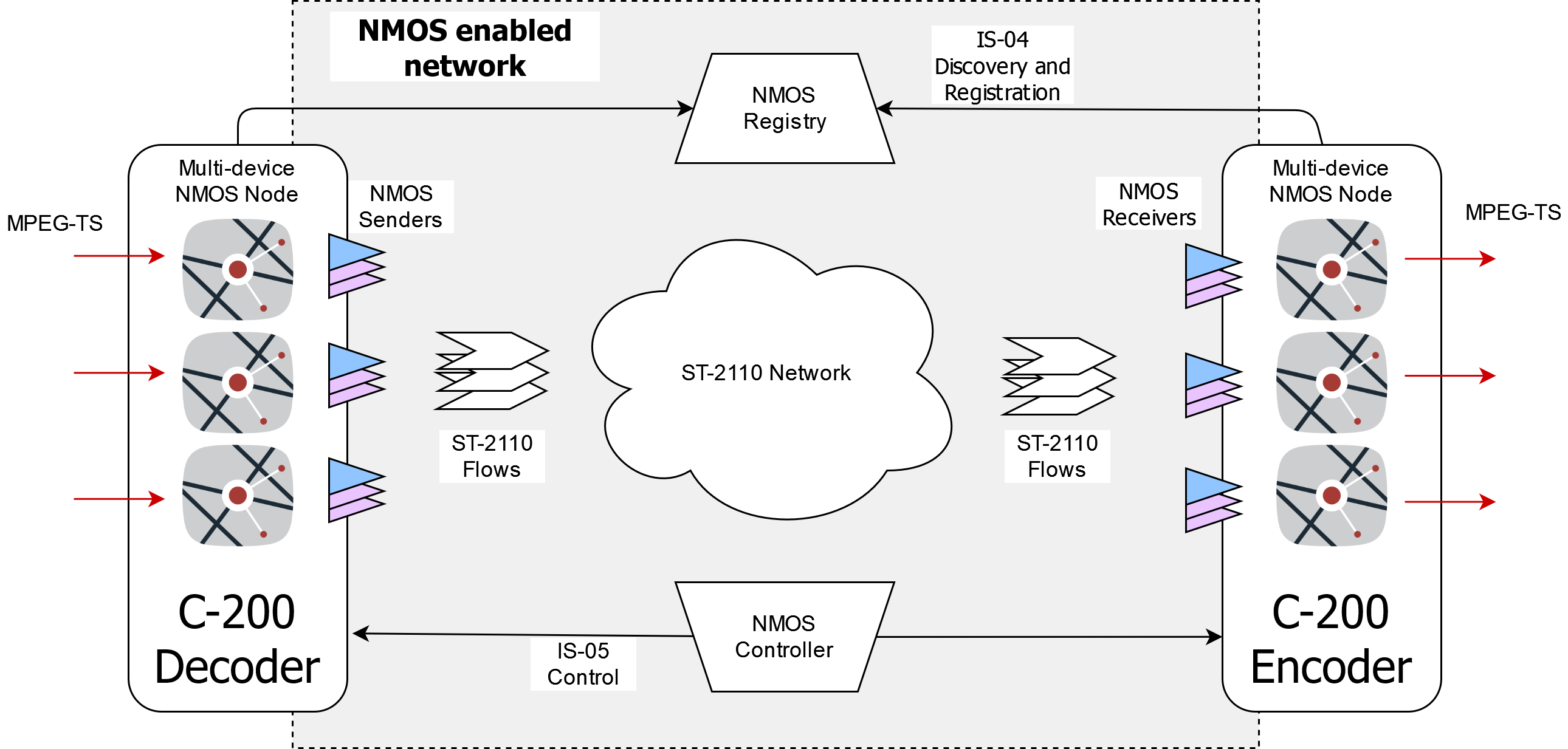Our C-200 Encoders and Decoders with native Uncompressed IP Support can be easily integrated into NMOS enabled media network environments, allowing a common connection management interface to control all media sources and destinations.

The ongoing transition of the media industry into an IT-centric world brings with it many advantages, including the benefits of data transport over IP networks. While this approach brings efficiency gains in terms of infrastructure and workflow integration among other advantages, it also raises the complexity of signal management within the production or broadcast environment. NMOS provides a common device management architecture that allows all compatible media systems to be introduced onto the IP network and quickly brought into operation.
In a typical broadcast facility there will be dozens or hundreds of devices (both physical and virtual) producing and consuming signals, with operational staff and automated scheduling systems needing to manage, monitor and control which signals go where at any given time.
In the SDI world, sources are usually connected to a central router matrix, from which a number of destinations will have signals “routed” to them as determined by the crosspoint configuration within the router. Each source or destination on the router matrix correlates to one physical coaxial cable, carrying one SDI signal. From an operational perspective, the identification of these endpoints will normally be considered somewhat static, unless cabling is physically altered.
As opposed to transporting a single serialised data stream over coax, sending packetised data into an IP network allows multiple streams per cable and greater flexibility for routing because of the capabilities of network switches. Using IT infrastructure allows multiple processes to exist on one host, instead of several single purpose appliances, or even be migrated from one host to another using virtual machines and containers.
This all results in great potential for increased signal density, less hardware and possibilities for integration into other IP based workflows.
With a more complex routing behaviour arises the need to manage the signals on the network, not only identifying which physical cable the data has arrived on and where it should be sent to, but also in determining what the signal represents and the exact logical source from which it originates.
Moreover, while SDI sources may push signals towards a router regardless of whether any downstream routes are in effect, in the ST 2022-6 and ST 2110 domain, multicast transport requires receiving endpoints to subscribe to advertised senders in order for a network switch to pass the required data forwards.
NMOS solves these problems by defining a mechanism for discovering resources (devices and endpoints) on the network and controlling the connections between them. C-200 Decoders will advertise the available sources as described in the SDP manifests, as well as the senders that will deliver the media over uncompressed IP streams. C-200 Encoders will advertise receivers that can subscribe to any compatible senders on the NMOS network.

